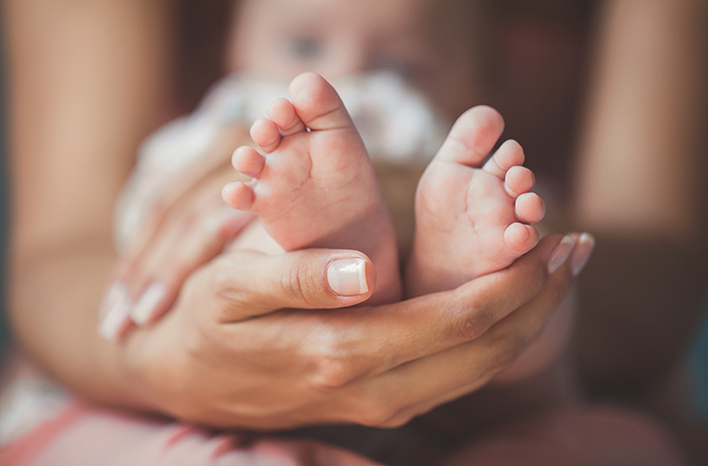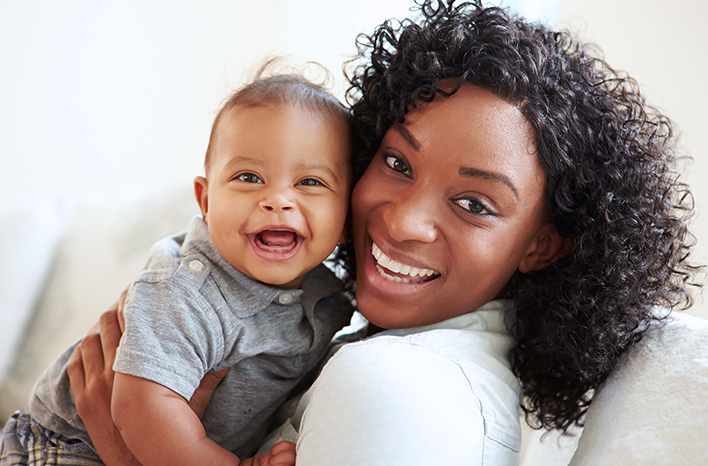What is Domestic Adoption?

For hopeful parents looking to adopt a baby, one of the first decisions to make is to choose between international and domestic adoption. But what is domestic adoption, and how does it differ from international adoption? In our guide below, learn the differences between both options, so you can make the best decision for your growing family.
US Domestic Adoption: What is it?
U.S. domestic adoption is the name given to the process through which a birthmother places an infant with an adoptive family. In order for a domestic adoption to move forward, adoptive parents must meet all adoption requirements, including the completion of an adoption home study, and the birthmother must legally consent to the placement. Domestic adoption placements are finalized through the courts, with both parties signing the appropriate legal forms.
Start Your Adoption Journey
Domestic Adoption vs. International Adoption: What’s the Difference?
For hopeful parents who are looking to adopt a baby through domestic adoption, this route covers nationwide placements. Because both the birthmother and the adoptive parents reside within the United States, domestic adoptions often involve interactions and some form of communication between both parties. International adoptions, on the other hand, grant the opportunity to provide a home for a child from another country. In many cases, internationally adopted children come from an orphanage or foster home.
With each type of adoption, hopeful parents have the opportunity to provide a loving, compassionate home and the best possible future for a child. Below, we’ve outlined some of the biggest differences adoptive parents can anticipate when deciding between domestic adoption and international:
- Costs
- Requirements
- LGBT Adoption
- Timeframe
- Age and Background of the Adopted Child
- Legal Concerns
LifeLong Adoptions: A Domestic Adoption Service Provider You Can Trust
Since 2011, we’ve helped hundreds of hopeful parents achieve their dreams of building a family. As an LGBT-friendly domestic adoption service provider, our compassionate team is committed to helping prospective parents of all backgrounds grow their families. Regardless of a hopeful parent’s marital status, sexuality, gender identity, racial background, cultural heritage, or otherwise, our team members are dedicated to making dreams come true — for everyone.
Domestic Adoption vs. International: Costs
Many people think that international adoption costs a lot less than domestic adoption, but that is a common misconception. The reality is that the cost of adoption can vary greatly from family to family and situation to situation, regardless of the type. Sometimes one form costs significantly more than the other, and other times they are relatively similar in cost.
Both international and US domestic adoption come with their own unique costs. For example, in an international adoption, prospective parents can anticipate paying for foreign travel, lodging expenses, and costs associated with a visa and immigration documents. In a domestic adoption, hopeful parents may have to contribute a certain amount to an expectant mother for pregnancy-related support, as well as legal fees, and the costs of traveling to and staying in the birthmother’s state.
Keep in mind that general statistics about adoption costs you may find elsewhere typically apply to working with a traditional adoption agency. LifeLong Adoptions’ marketing program is found to cost more than $20,000 less than the total cost you’d pay with traditional adoption agencies. If you choose to work with LifeLong Adoptions, you’ll be choosing one of the most affordable ways to adopt a baby.
Adoption Requirements
When comparing domestic adoption against international, requirements can vary greatly between the two. Many of the differences revolve around where the hopeful parents are adopting from, as each area or state has its own rules and regulations around adoption. For example, in domestic adoptions, prospective parents must adhere to any laws in the state they are adopting from. In international adoptions, different countries have their own laws and requirements that must be met in order to move forward with the adoption.
LGBT Adoption: Domestic vs International
Throughout the United States, LGBT adoption is legal and treated the same as any other type of domestic adoption. However, not all countries operate under the same rules and laws, and some countries may have stipulations, restrictions, or limitations on LGBT international adoption.
Adoption Timeframe
With domestic adoption, there is not usually a traditional waiting list. An expectant mother chooses you based on the adoptive family profile you create. Because of this, the process can take anywhere from a couple of months to a couple of years. This also means that the process itself is more unpredictable than with an international adoption. On top of that, with domestic adoption, there is always the possibility that a planned adoption could fail at any point during the process.
In an international adoption, the process is a little more structured. Hopeful adoptive families are usually placed on a waiting list, meaning you will start at the bottom of the list and rise to the top as children are adopted. Planned international adoptions rarely fail; however, laws may change, other social or political issues may arise, or a natural disaster could occur while you’re in the process of adopting, which could cause delays.
Age and Background of the Adopted Child
Domestic adoption is the only way to adopt a newborn baby. After birth, the adoptive family will stay in the birth state of the baby for 7-10 days until approval is granted to take the infant home. In addition, it’s likely adoptive parents will have access to the medical history of the birthmother and sometimes the birthfather.
With an international adoption, prospective parents will be adopting an older infant or a toddler. The child will have spent most or all of his or her life in some sort of foster care or orphanage. Medical records on the child are sometimes available, but you would rarely receive any background or medical history about the child’s family.
Adoption Legal Concerns
With a domestic adoption, the birth parents will have legally terminated all their parental rights after finalization. Many hopeful families choose international adoption because they are worried the child’s birth parents might try to take the child back in the future. Not only is this extremely rare, it’s often the result of questionable legal practices, which is why it’s important to partner with qualified domestic service providers like LifeLong Adoptions.
Let Us Help Grow Your Family
At LifeLong Adoptions, we’ve helped connect hopeful parents and birthmothers since 2011. With our expert team, safe, personalized service, and nationwide outreach program, you can count on us to help achieve your dreams of building a family. Start your journey with us, and our helpful team members will be with you every step of the way, offering guidance and support.



